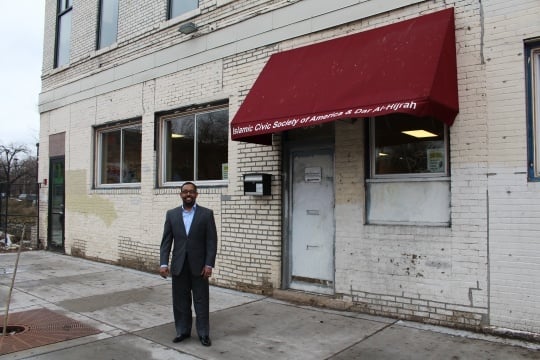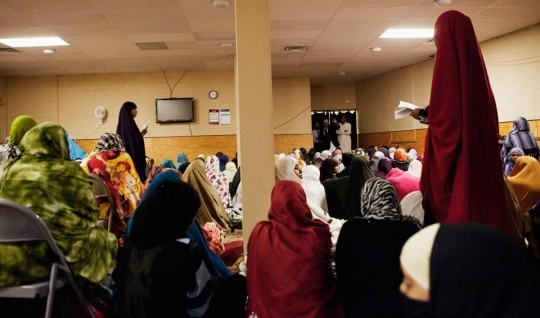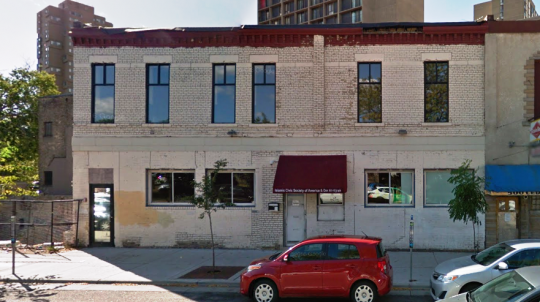Dar Al-Hijrah Mosque, Minneapolis
Creator:
Anduin Wilhide
In 2015, Imam Sharif Mohamed, Abdisalam Adam, and other leaders of Dar Al-Hijrah mosque raise their hands in prayer after the remodeling of their building following a devastating fire.
.
Bibliography
Adam, Abdisalam. Interview with the author, July 7, 2015.
Wilhide, Anduin. “Dar Al-Hijrah Mosque: ‘Home of Migration.’” Augsburg Digi-Tours, June 19, 2017.
http://digitours.augsburg.edu/items/show/9?tour=1&index=12
Chronology
1991
Civil war erupts in Somalia, forcing thousands to flee their homeland.
1993
Large numbers of Somali refugees begin arriving in Minnesota, including the founders of Dar Al-Hijrah, who settle in the Twin Cities.
1993–1998
Somalis worship in mosques and Islamic schools established by other Muslim communities in the Twin Cities, including Masjid Al-Huda, Dar Al-Haq (later Dar Omar Al-Farooq), and Al-Amal School.
1998
Somalis open their first mosque, the Riverside Islamic Center, on 504 Cedar Avenue in Cedar-Riverside. The mosque includes a men’s prayer room on the first floor and a women’s prayer space next door.
2000
The mosque is incorporated and the congregation changes its name to the Dar Al-Hijrah Cultural Center.
1998–2006
The congregation grows and includes Somalis, some Oromo, and other East African Muslims. Friday prayers attract up to four hundred worshippers. Dar Al-Hijrah acquires more space for Islamic school for children (dugsi), meeting space, and offices.
2006
Dar Al-Hijrah purchases the building on 504 Cedar Avenue and changes its names again to Dar Al-Hijrah Islamic Civic Center, reflecting the congregation’s commitment to civic education along with religious worship.
2013
The congregation changes the organization’s name to the Islamic Civic Society of America because members see it as an American institution and want to show that Islam and democratic principles are compatible.
2014
On January 1, a devastating fire almost destroys Dar Al-Hijrah, and it closes for more than a year. During the closure, congregants worship at the Brian Coyle Community Center and mosque leaders use offices in the Trinity Congregation office building.
2015
After extensive renovations, Dar Al-Hijrah re-opens in the spring.
2015
Dar Al-Hijrah hosts public events with faith leaders from churches, synagogues, and mosques, along with elected officials and community members, to fight against Islamophobia in Minnesota and the United States.
Bibliography
Adam, Abdisalam. Interview with the author, July 7, 2015.
Wilhide, Anduin. “Dar Al-Hijrah Mosque: ‘Home of Migration.’” Augsburg Digi-Tours, June 19, 2017.
http://digitours.augsburg.edu/items/show/9?tour=1&index=12




.jpg?width=200&height=200&name=Friday%20Afternoon%20Prayer%20at%20Dar%20Al-Hijrah%20Mosque.1.8.16.Photo%20Credit%20Wali%20Dirie%20(1).jpg)





.jpg)


